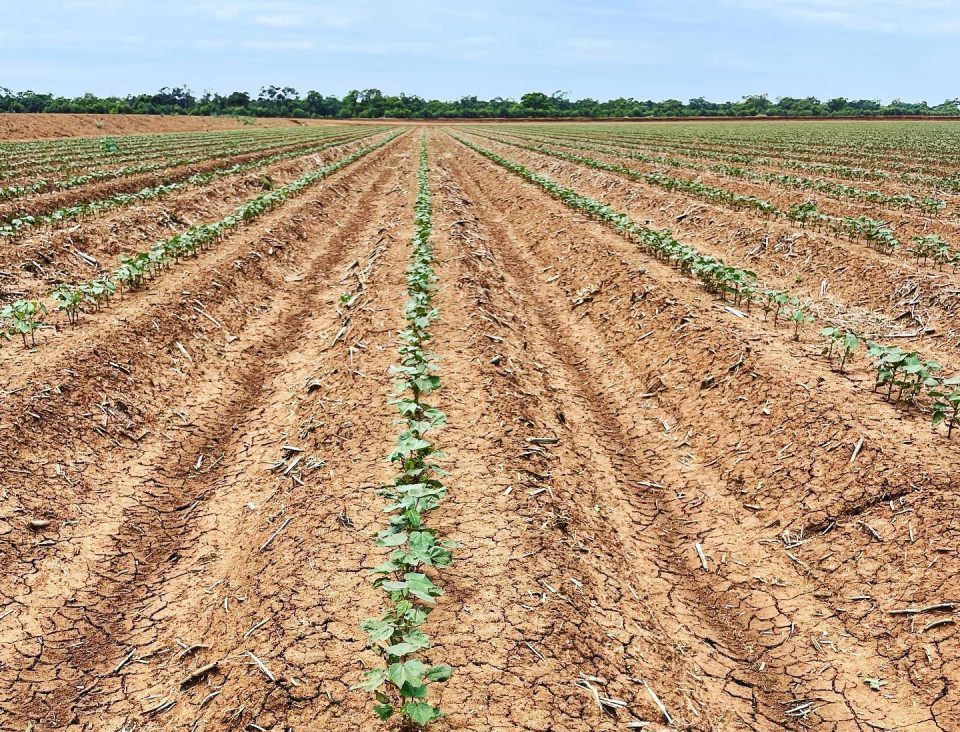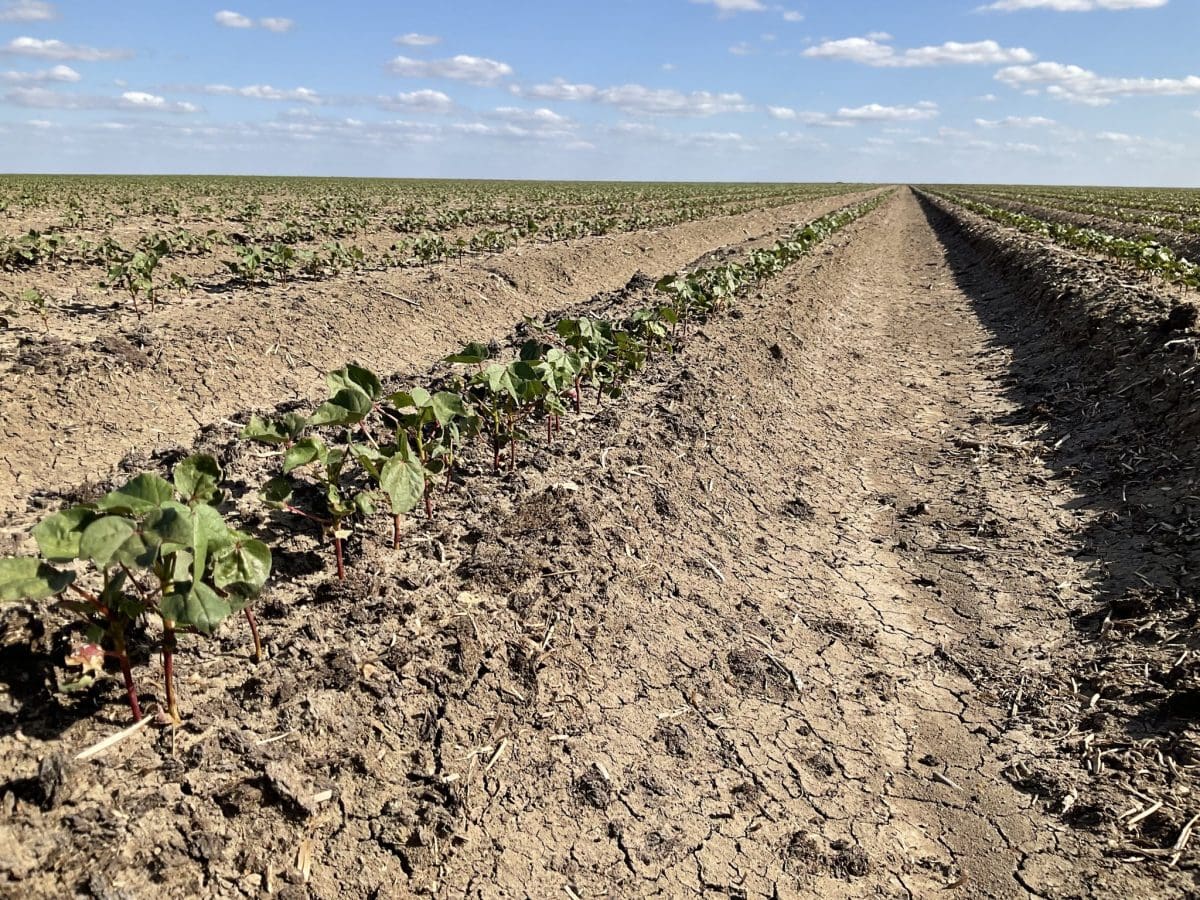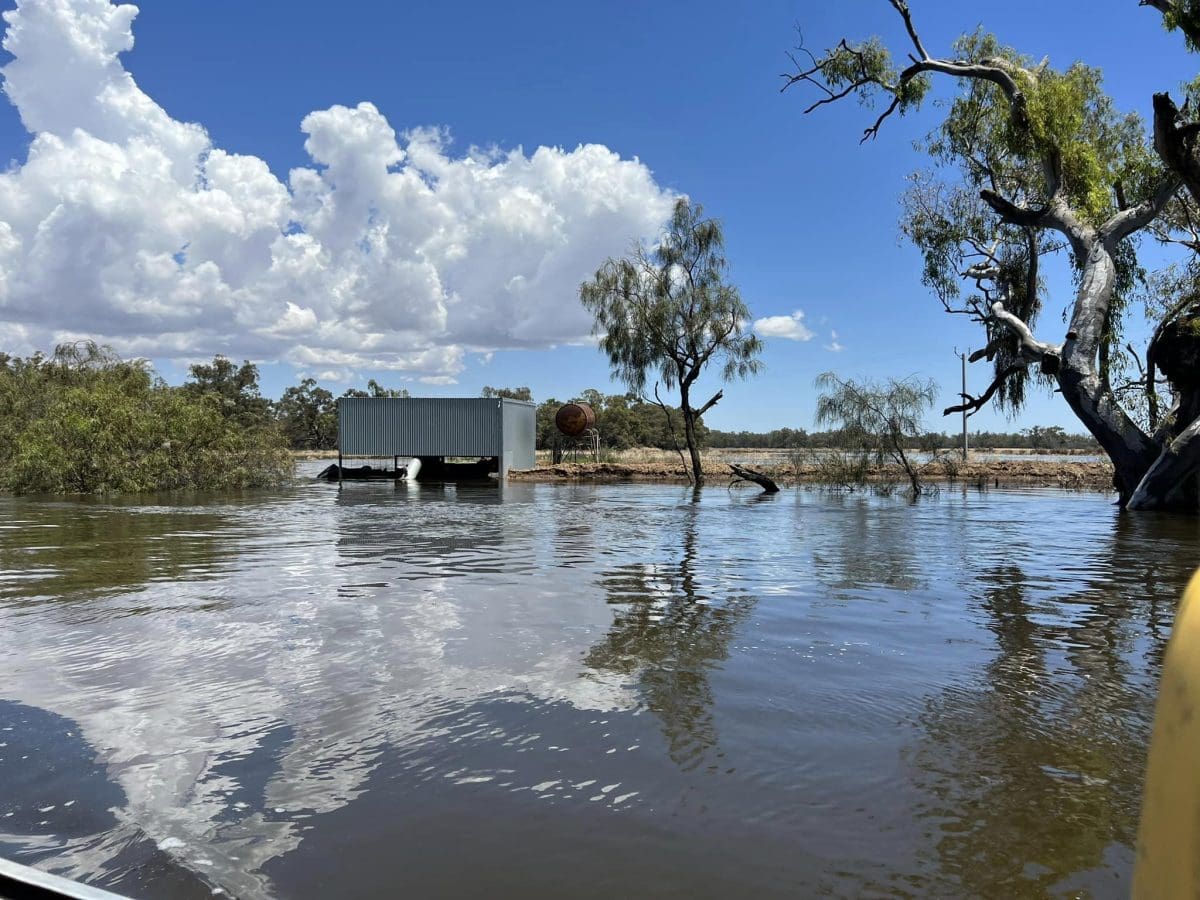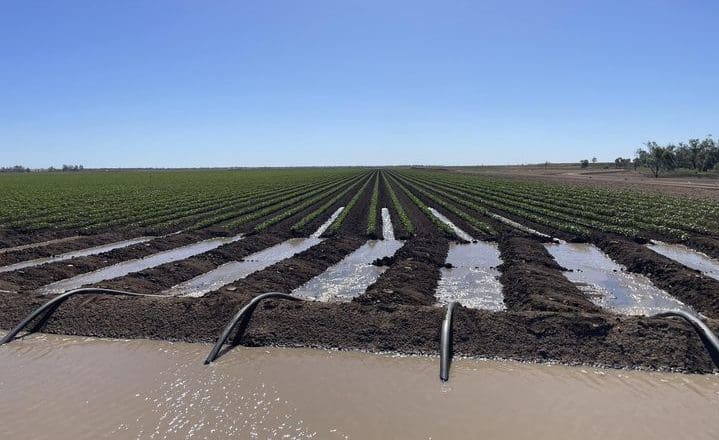
Cotton plants emerging from the ground at a property in Darlington Point. Photo: Southern Cotton
NEW SOUTH Wales cotton growers are nearing the end of a turbulent planting window with mixed results across the valleys.
Northern NSW growers are expected to plant almost all of the estimated area, with some dryland cotton yet to go in the ground.
This is an improvement on expectations for last, when the region was expected to take a significant hit from rainfall, flooding and ground preparation delays.
In southern NSW, many growers could not plant any cotton due to prolonged flooding and cool temperatures.
Short window narrows options
Growers in the Macquarie Valley and southern NSW and northern Victoria also have to contend with the shortest traditional planting window of all regions, running from about mid-October to mid-November.
Hillston-based agronomist Pat McGuinness called the cotton planting in his region “an absolute disaster”.
He said the southern region would be lucky to have planted 30pc of the area usually set aside for cotton.
“There is no cotton planted in Condobolin, there is barely any cotton planted in Hillston and in Hay and Deniliquin there is probably 50pc or less of the cotton planted,” Mr McGuinness said.
“It is coming near to the worst year I have had for cotton in southern NSW.”
He said of the cotton planted, there will be a small amount of “quite acceptable” crops that may yield 10 bales per hectare and other crops that would be lucky to yield anything.
“I have stuff which is not out of the ground yet and [growers] just have to cross their fingers and hope that it yields something.”
Mr McGuinness said it also shocked him to see some growers continuing to plant and re-plant in December and in temperatures below recommended levels.
He said he “couldn’t understand the logic of it” and wouldn’t suggest growers put time and funds into planting this late.
On top of the failed planting, Mr McGuinness said growers were still contending with the constant threat their properties and farm infrastructure being flooding.
“My house nearly got flooded the other day, and I am at a constant threat of losing my house to floodwater.”
Due to the flatness of the country, he believes the floods will remain for at least four to six weeks.

Some growers in the Hay region managed to plant a promising looking cotton crop. Photo: Summit Ag Agricultural Consulting
Macquarie sees reductions
Conditions were slightly better for growers just north in the Macquarie Valley; however, planted area were also significantly lower than predicted.
Cotton Australia Macquarie Valley regional manager Craig Chandler said the area planted was down about 30pc.
“A lot of the crops have gone in late, and we have had a very reduced planting unfortunately,” Mr Chandler said.
“The guys are just into grain harvest [and] that is all they can do; it is far too late to plant now.”
Based on current numbers, it is expected that area planted will be down from the 35,000-hectare average to about 26,000ha.
“There was some earlier stuff put in mid-October and that is up and away.
“It was just what they could, whenever they could; it was pretty sporadic.”
Mr Chandler said there were also some growers in the Narromine area who were still picking cotton from the previous season.
He said, surprisingly, growers were still getting some value from the crop, but there would be yield losses and quality downgrades.

Flooding is still impacting farming properties in southern NSW. This photo was taken in Wallanthry, a farming region near Hillston. Photo: Helen Dalton MP
Stop-start plant
Despite predictions of a near 100pc crop plant, northern NSW growers still struggled through the peak in the planting window.
Cotton Australia northern NSW regional manager Alec Macintosh said he was amazed at the hard work, dedication and patience of growers who planted large paddocks in the face of frustrating conditions.
“I am amazed how much ended up getting put in and how well they have done,” Mr Macintosh said.
“I have guys out here who have had floods running through their places since August 20 and the water has only just stopped running.”
Mr Macintosh said many growers were forced to plant in multiple stages and work between rainfall events.
It was a “stop-starting planting”, according to Gwydir Valley Cotton Grower’ Association chair Mick Humphries.
“Some went in earlier and some went in very late,” Mr Humphries said.
“We were all struggling to get what we could planted before the big rain came and then we got so much rain that it killed half or part of it anyway.”
The situation was the same for growers on the NSW-Queensland border, with rainfall delaying planting by at least three weeks.
“We got delayed from ground prep through because of all the rain we had, about 300mm,” Mungindi Water Users’ and Cotton Growers Association president Tristram Hertslet said.
“We started behind and then we had a few bigger rainfall events after we started planting.
“Every time we got a break in the planting window, we ran in as much as we could.”
Hopes on weather
All the irrigated cotton has been planted in northern NSW and over the border into Queensland, with small areas of dryland to go in the ground.
The amount that will be planted between now and Christmas will depend on temperatures and rainfall with some growers hoping for about 20mm before considering planting more dryland crops.
Mr Humphries said the temperature over the coming months will determine the success of the crops in his area.
“We are sort of at the crossroads that if we get some nice hot weather through until January and beyond, the crop still has great potential.
“But, if the cooler weather pattern continues, yields will definitely come back.
“It is a wait and see for the cotton.”
Mr Hertslet said after the recent hot weather, the crops are progressing well and catching up after a slow start.
He said an extreme shift in weather from cold and wet to hot and windy now means the crop requires a first round of irrigation.
“In our early crop that we planted, we are just now doing our first water.
“It is just drying back a bit now.”
Mr Macintosh said irrigators were starting up across the region, with areas from Narrabri through to Moree drying out.
“All the guys have started irrigating, which they were trying to avoid because most of them are in the middle of harvest.”
The battle between getting cotton planted and finishing the winter crop harvest was a common theme for growers across the state.
“Most people are pretty stretched on farm at the minute…everything is happening at once,” Mr Humphries said.
“With harvest delayed due to the wet weather and the cotton not playing the game, everyone is stretched.”

The first irrigation for the season has commenced in some NSW growing regions. Photo: CSD
State-wide reduction predicted
The failed planting for large sections of NSW was reflected in the ABARES Crop Report released last week, which predicted a 40pc drop in the state’s overall cotton production.
This hit national figures with Australian cotton production now forecast to reach 4.3 million bales, a 23pc hit from last season.
The forecast is almost one million bales less than the 5.25Mb figure released by Cotton Compass and the “low 5Mb range” from Rabobank, both in announced in early November.
Grain Central: Get our free news straight to your inbox – Click here

HAVE YOUR SAY